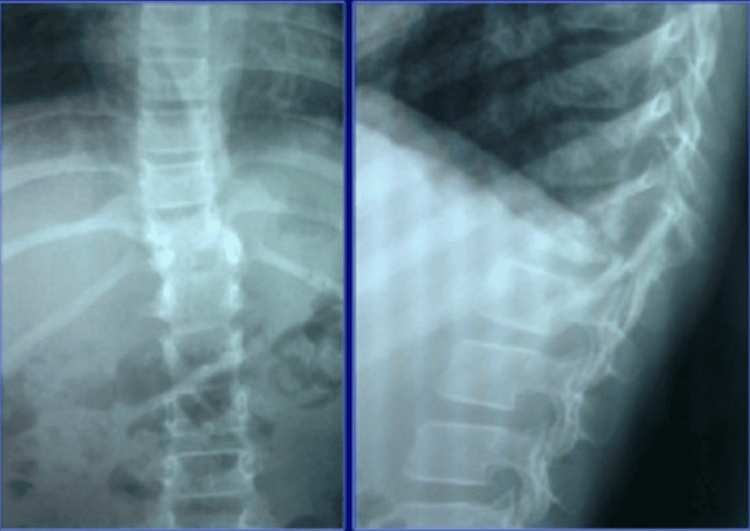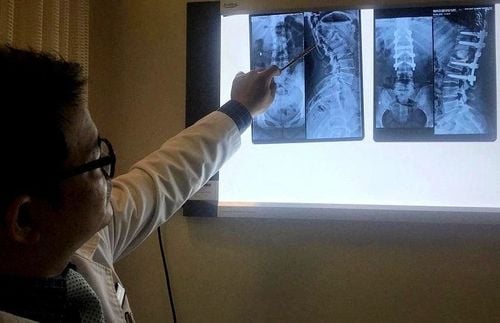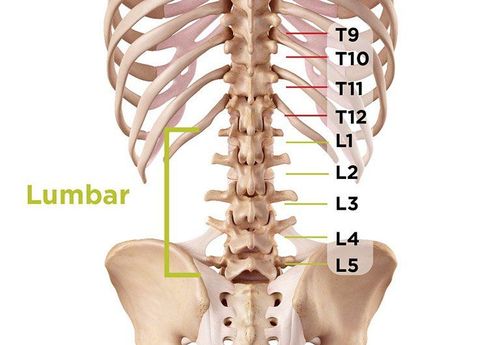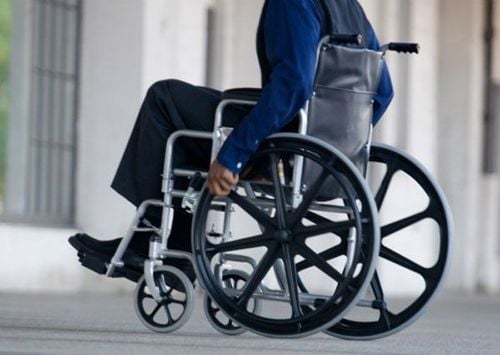This is an automatically translated article.
The article is professionally consulted by Master, Doctor Tong Diu Huong - Radiologist - Department of Diagnostic Imaging - Vinmec Nha Trang International General Hospital.Tuberculosis is caused by the bacteria Mycobacterium tuberculosis. It is one of the top 10 causes of death worldwide. This bacteria usually causes disease in the lungs (pulmonary tuberculosis), but it can spread to other organs, including spinal tuberculosis.
1. What is spinal tuberculosis?
When TB disease spreads beyond the lungs, it is called extrapulmonary tuberculosis (EPTB). One form of EPTB is bone and joint tuberculosis, which accounts for about 10% of all EPTB cases in the United States. Bone TB is understood to be a form of tuberculosis that affects the spine, long bones, and joints, and the most common type of bone TB is spinal TB, which can affect any bone in the body.
Tuberculosis occurs when a person has pre-existing tuberculosis and it spreads outside the lungs. Tuberculosis is usually spread from person to person through the air. After contracting tuberculosis, the bacteria Mycobacterium tuberculosis can travel through the bloodstream from the lungs or lymph nodes into bones, spine, or joints. Tuberculosis of the bone is more common in places with an abundant blood supply such as long bones and vertebrae.
Tuberculosis of the bone is relatively rare, but over the past few decades its incidence has increased in developing countries due in part to the spread of the HIV/AIDS epidemic. Although rare, bone tuberculosis is difficult to diagnose and can lead to other serious problems if left untreated.

Vi khuẩn Mycobacterium tuberculosis là nguyên nhân chính gây bệnh lao xương
2. Symptoms of spinal tuberculosis
To diagnose tuberculosis of the spine it is not always easy to recognize the symptoms until the disease has progressed further. Bone TB - especially spinal tuberculosis - is difficult to diagnose because the disease is painless in its early stages and people may not show any symptoms. When bone tuberculosis is in its final stage when it is discovered and diagnosed, the signs and symptoms are often very advanced.
Also, sometimes the disease can lie dormant in the lungs and move to other parts without the person knowing it. However, once you have tuberculosis of the spine, there will be some symptoms that need attention as follows:
Severe back pain Edema Spine stiffness and limitation of movement Formation of an abscess
When spinal tuberculosis progresses, it will cause a number of dangerous symptoms including:
Neurological complications Gradual shortening of limbs in children Bone deformity In addition, patients with spinal tuberculosis may with or without normal TB symptoms such as:
Fatigue Fever Night sweats Weight loss

Người bệnh lao cột sống có thể gặp tình trạng giảm câm kèm theo mệt mỏi
3. Diagnosis of spondyloarthritis caused by tuberculosis
There are two common tests to diagnose TB, the drawback of which is that they do not tell if a person has latent or active TB:
Skin test: This is also called the tuberculin skin test. (also called the Mantoux test). The nurse will inject a small amount of fluid into the skin of the patient's lower arm. After 2 or 3 days, they will check for swelling in the arm to determine the results. If the result is positive, the patient may have been infected with TB bacteria. Interferon-Gamma Release Assays (IGRAs) are used to measure the response when TB protein is mixed with a patient's blood.
If you have a positive skin or blood test, your doctor may order an X-ray or CT scan to look for changes in your lungs or bones to detect spinal TB on an X-ray. In addition, the doctor may also test for TB bacteria in the sputum or mucus secreted when the patient coughs to detect latent or active TB.
X-rays of the spine
X-rays of the spine in the early stages of the disease can be normal because 50% of bone mass is lost before changes are visible on x-rays. Conventional radiographs may show vertebral destruction and narrowing of the intervertebral space. X-ray images of spinal tuberculosis can be divided into 3 stages as follows:
Early stage: When x-rays of the spine are taken in many different positions such as straight or tilted, the disc slots will be seen. narrow, however, this sign is also difficult to detect and easily confused with other diseases. Full-blown stage: At this stage, the bacteria Mycobacterium tuberculosis invades the spine and causes damage, causing the edges close to the disc to be broken and the vertebral body collapsed, causing the spine to lose its physiological curve (vertebral deformity). .

Hình ảnh lao cột sống trên phim chụp Xquang
Recovery phase: When this stage is reached, the vertebrae infected with TB fuse together resulting in loss of the space between the vertebrae.
Other diagnostic techniques
An MRI scan can show the extent of spinal stenosis and show changes in the early stages of spinal tuberculosis. Visible signs of edema or abscess are strongly suggestive of spinal tuberculosis rather than malignancy. CT scans and bone scans can also be used, but MRI is the best method for assessing risk to the spinal cord. Biopsy of bone or synovial tissue is also commonly used. Vinmec International General Hospital with a system of modern facilities, medical equipment and a team of experts and doctors with many years of experience in neurological examination and treatment, patients can completely rest in peace. examination and treatment center at the Hospital.
To register for examination and treatment at Vinmec International General Hospital, you can contact Vinmec Health System nationwide, or register online HERE.
SEE MORE
Tuberculosis of the bone: Causes, symptoms, diagnosis and treatment How does spinal tuberculosis form? Methods of diagnosis and treatment of spinal tuberculosis














